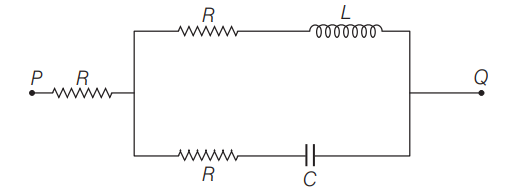Q.
A voltage $V_{PQ} = V_0 \, \cos \, \omega t$ (where $V_0$ is a real amplitude) is applied between the points P and Q in the network shown in the figure. The values of capacitance and inductance are $C = \frac{1}{\omega R \sqrt{3}}$ and $L = \frac{R \sqrt{3}}{\omega}$
Then, the total impedance between P and Q is

Solution:
